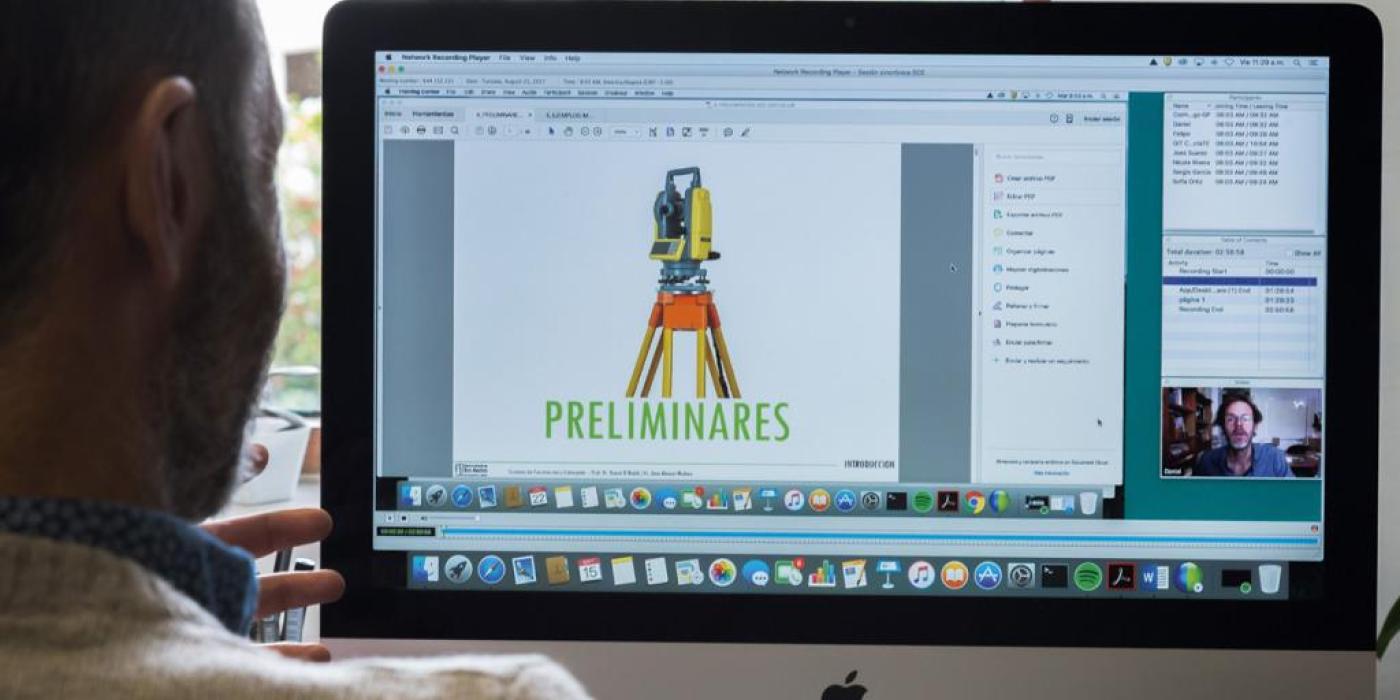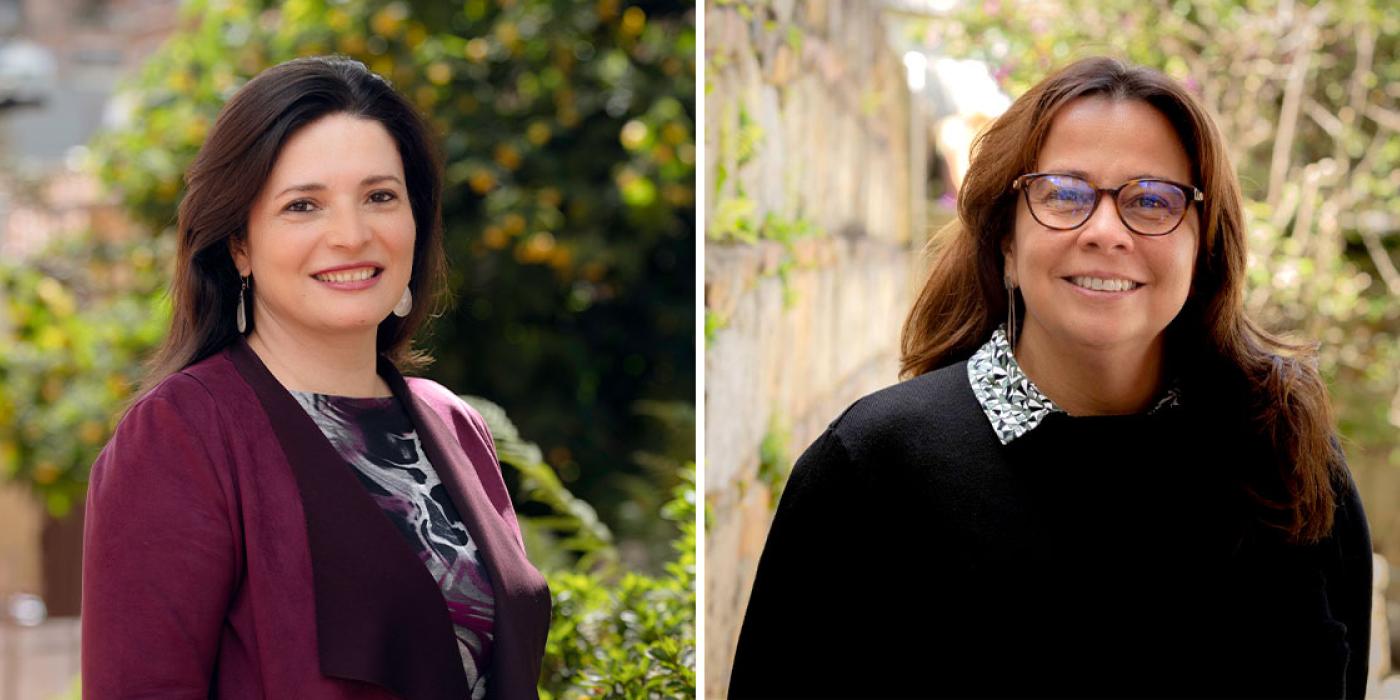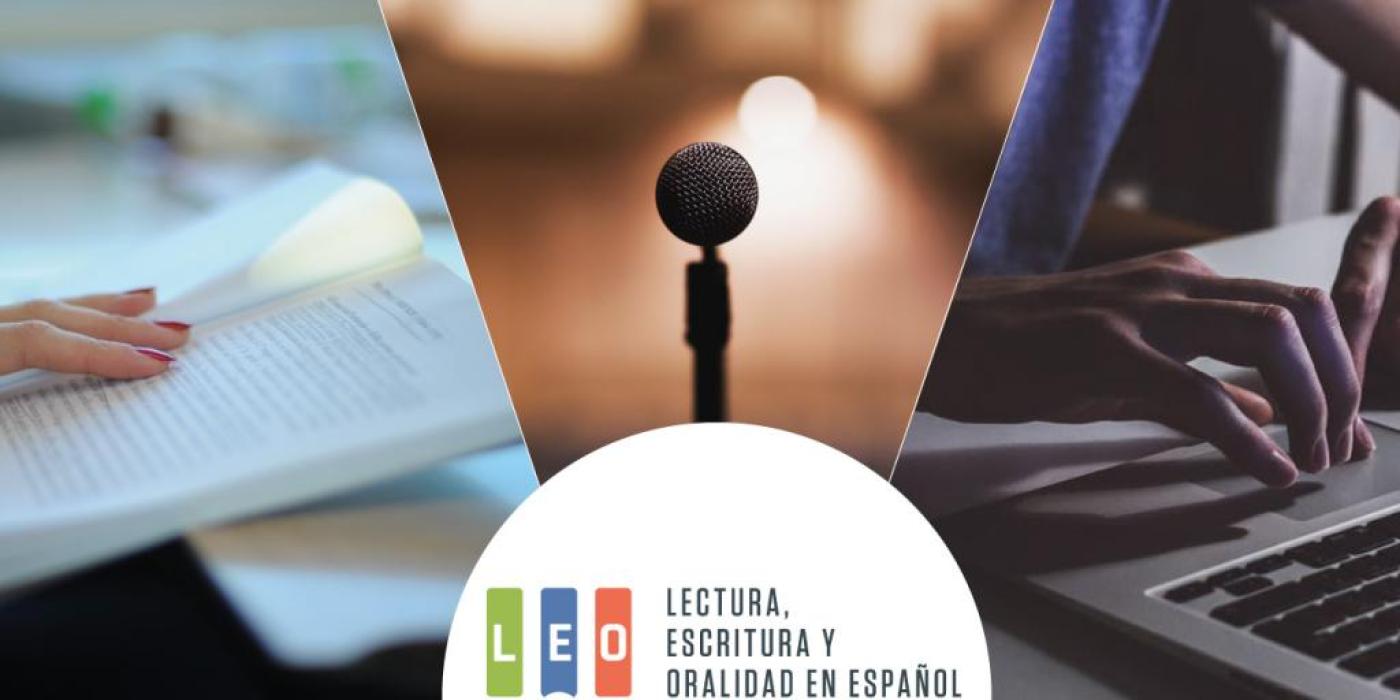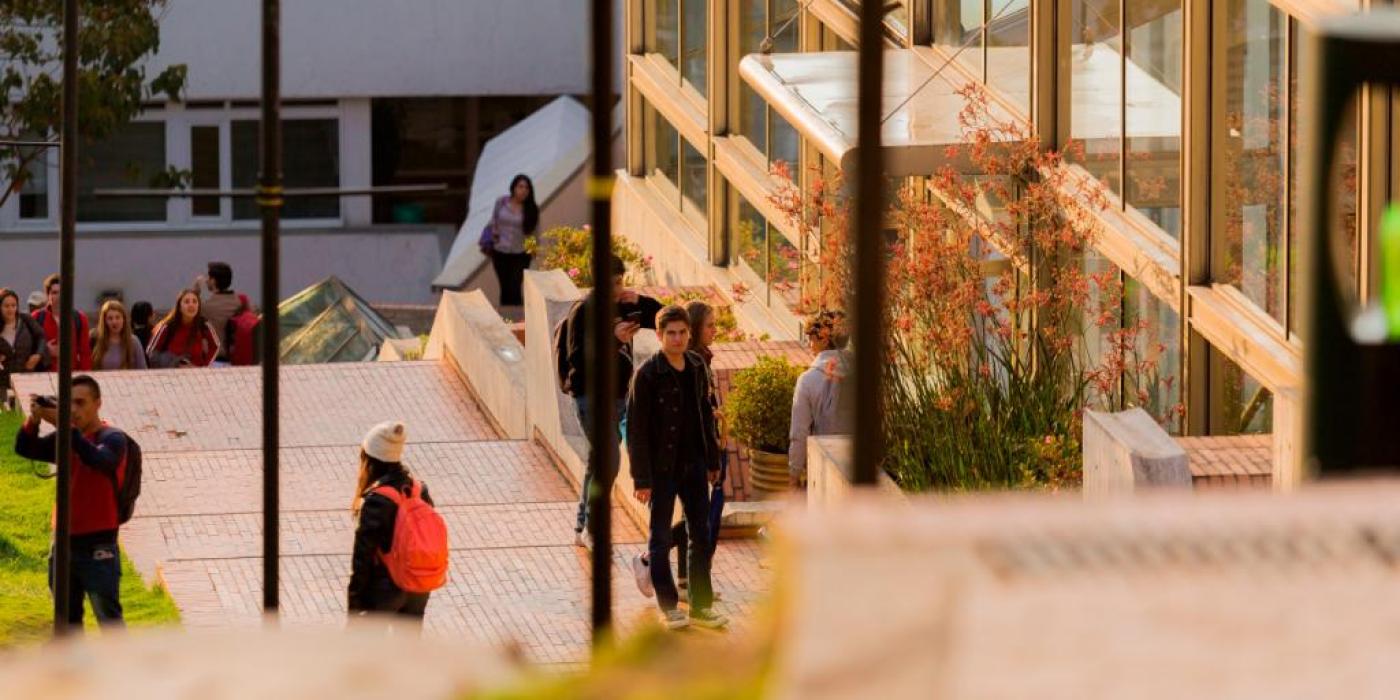
Connecting the classrooms with technology
The innovative pedagogical models Los Andes uses enhance learning environments, and classes are now not only taught in classrooms.The innovative pedagogical models Los Andes uses enhance learning environments, and classes are not only taught in classrooms.
‘Ronaldo’ is today’s winner. He beat ‘Messi’, ‘Beyonce’, ‘Sofia Vergara’, ‘Lebron James’, ‘Serena Williams’, and 24 other characters. This is not the list of the world’s highest-paid celebrities. The competition does not take place in a sporting environment or in front of the cameras but in the Construction and Estimation Systems class offered by the Department of Architecture at the Universidad de los Andes, which is led by professors Daniel Huertas Nadal and Juan Manuel Medina del Río.
It is a surprise quiz and to take part students create their own avatar and answer a series of questions with their cellphones in a given time limit. Finally, the score is displayed on the screen and a summary of the answers is shown.
Assistant professor Huertas Nadal says that, “We are not interested in the answers all being correct. We want to identify the areas within the group that need to be strengthened. We are not so bothered about the result as we are the process”.
This is only one of the tools used in Uniandes that is part of the innovative education in class. The initiative started a year-and-a-half ago and is being supported by Conecta-TE (Center for Innovation in Technology and Education).
It is part of what today is known as the Flipped Classroom: a new pedagogical model in which the direct teaching is done outside the classroom and the time in class is used to develop activities that have significant learning value.
In a traditional classroom the professor presents content, while the student receives the information. Outside the classroom, when the student is doing homework, they apply what has been learnt in class. In the flipped classroom, these two activities are inverted. According to the director of Conecta- TE, Luz Adriana Osorio, by using this methodology, the student can engage with the content before the in-class session. They can explore it at their own rhythm using different formats, and in the class session the teacher can dedicate the majority of their time to using the knowledge learnt. “The professor plays the role of mediator in the knowledge acquisition process”, adds Osorio.
The Construction and Estimation Systems class is a perfect example of what an inverted class looks like. “We make small videos that we call ‘pills’. These are summaries in which we highlight the main concepts or issues associated with the topics that they are working on at that moment. The videos are ten minutes long and are put on a platform that the student can access before class”, explains Huertas Nadal.
In this class, to improve the pedagogical experience, a unique blend of tools is used such as virtual forums, viewing the construction of Building C with a 360° virtual tour using Panotour, padlet (a digital canvas to create projects and include multimedia archives that is easy to share), WhatsApp discussions, and case studies.
Making sure that teachers’ educational stake is enhanced and maximized with alternative proposals requires at least a year of work before a semester-long pilot can be launched. Conecta-TE helps teachers who want to apply different methodologies in their classes to redesign their courses. It then shows them how using technology can enhance pedagogical designs.
“Conecta-TE is not going to teach you technological strategies. It gets inside your head, coaches you deeply, and removes the inner part of your teaching abilities. It then makes you ask yourself if what you are doing is good or not,” states Juan Manuel Medina del Río who, together with his coworker, has been implementing his pedagogical strategy with second-year architecture students.
Medina del Río, who is an Associate Professor, considers that what teachers should do, instead of teaching content, is present basic concepts and then develop competencies that allow young people to learn to learn. The teacher adds that, “They need to be autonomous, capable of learning collaboratively, and able to make decisions in the face of diverse situations. They need to cope with new useful techniques as well as other problems, which is what architects do regularly. It is for this reason that we have structured a teaching program based on challenges rather than lectures”.
The role of technology in teaching
For Luz Adriana Osorio, expert in collaborative learning environments, it is clear that technologies do not solve educational problems. However, they do give enormous potential to pedagogical possibilities, and, thus, play a very important role in in the teaching-learning process. “Technology has penetrated everything that we do in society, students communicate, make purchases, relate to each other, and make plans using technology”, says Osorio. For this reason, they are comfortable using it in class.


